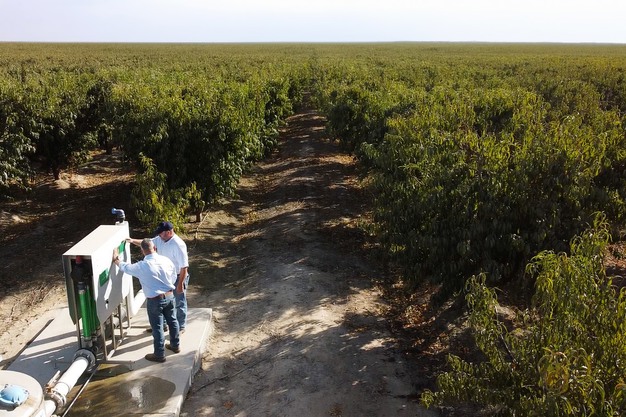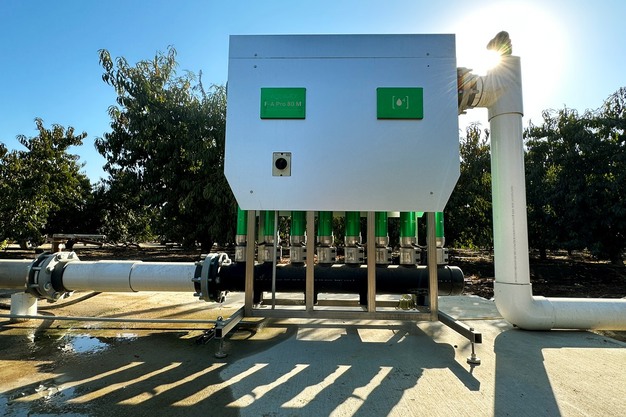With water never far from the news in California, there is a pressing need for agriculture to improve efficiencies. At the same time, for Prima® Wawona, some of its sites suffer from salinity and chloride issues and so the search has been on for a solution to help sustainably recover soil health.
This led the stone fruit grower to AQUA4D®, a precision water treatment tech that transforms irrigation water and can help save on inputs and regenerate soils. “Efficient use of our inputs continues to be a top priority,” says Nick Boos, chief agricultural officer. “We discovered AQUA4D and put it to the test in one of our more challenging fields. We had experienced a number of fertility issues along with visible chlorosis and water penetration problems.”
 Some of Prima Wawona's sites had suffered from salinity and chloride issues.
Some of Prima Wawona's sites had suffered from salinity and chloride issues.
In doing so, Prima became the first grower to use this technology on stone fruit. However, with a track record in treating crops across the world, there was legitimate hope that this technology could help the significant challenges at the site in Traver. Recent studies at the University of California (Lindcove) proved AQUA4D’s potential to increase water penetration, and successes at Central Valley pistachio and almond orchards showed its ability to sustainably manage salinity.
The ranch where AQUA4D was installed in early 2022 had some of the very worst water infiltration issues, said Matt Acosta, ranch manager. However that has changed in the last year or so. “It’s a night and day difference,” he says. “I can now easily probe one-handed and see that the water is penetrating past that three-foot mark.”
Keeping a close eye on changes in the soil--with first-hand observation, as well as sensors from AquaSpy and Hemav--has led to significant changes in irrigation practice, enabling some water savings. “We figure we’re saving about 25 percent water right now, based on what we’re doing,” said Acosta. “Now I only have to irrigate once every 10-12 days or so instead of every seven days.”
 The AQUA4D system.
The AQUA4D system.
The benefits of AQUA4D have gone beyond these water savings. With the trees previously suffering from excess chlorides and sodium, solving this issue was imperative to help the trees survive and regenerate the soils.
To track the changes to the soil and trees, the ranch was monitored closely, including sensors from Semios and satellite imaging from Hemav. Sensor data showed a significant decrease in EC concentration over time, an indication of decreasing salinity while satellite tracking shows a marked uptick in tree health and vigor.
“Post-AQUA4D implementation, we have seen visible and measurable differences in nutrient uptake and water usage,” said Prima Wawona’s Nick Boos.
 For more information:
For more information:
Brittnie Hammack
Prima Wawona
Tel: +1 (559) 694-6730
[email protected]
www.prima.com
